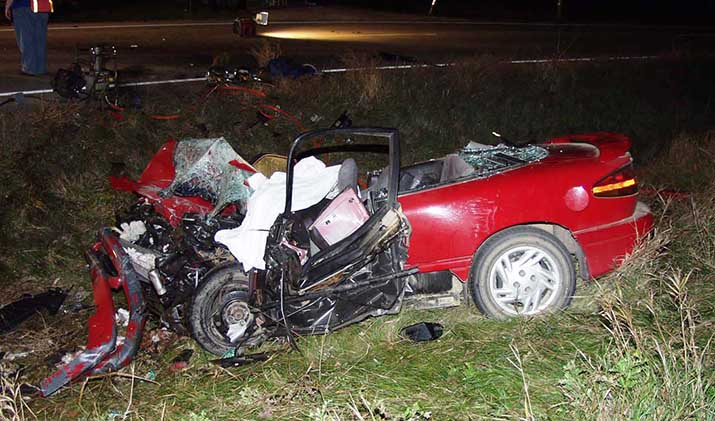Crash Facts: Forewarned is forearmed
Oct. 15, 2018

Some people really geek out on data. Some people don’t. But we can all agree that the more information we have about something, the better. Take motor vehicle crash statistics. The Minnesota Office of Traffic Safety (OTS) releases an annual report called Crash Facts, and as you can imagine, it’s full of statistics about where, when, and how crashes happen, as well as who they happen to. More importantly to anyone who drives, it summarizes the crashes, deaths and injuries that occurred on Minnesota roadways. Minnesota Motor Vehicle Crash Facts 2017 was recently released. The information provided in it can help you travel our roadways more safely, and it’ll be used by OTS, traffic safety partners, legislators and media to help drive down traffic fatalities and serious injuries.
The numbers are nothing if not sobering. In Minnesota in 2017, an average day saw 215 crashes resulting in 81 injuries and one death. That’s right: one death a day. Almost every day in 2017 in Minnesota, someone’s parent, child, sibling or friend died. Someone’s family was ripped apart.
And the heartbreaking part is that so many of them were preventable. For example, of the total 358 deaths due to crashes in 2017, 113 of them were alcohol related. And 78 of the people who died in Minnesota crashes in 2017 weren’t wearing a seat belt or other restraint.
But there is also good news. We learned that 92 percent of drivers and front-seat passengers wear their seat belts, and that traffic deaths decreased 9 percent from 2016. In fact, traffic fatalities in Minnesota have decreased sharply over the last decade. And Minnesota’s fatality rate per 100 million vehicle miles traveled (VMT) is one of the lowest in the nation at 0.63.
The 2017 numbers also tell us that fatal crashes are most likely to happen in rural areas (65 percent) – only 30 percent of fatal crashes happened in the seven-county metro area. And as you can imagine, crashes are most likely to happen during the work day and at the afternoon rush hour, between noon and 6 p.m. That’s when most vehicles are on the road, as evidenced by the 38 percent of fatal crashes and 44 percent of crashes in general that happen during that time period.
So even if you’re not a numbers geek, you can benefit from the numbers that OTS publishes every year. They serve as a reminder to buckle up, slow down, pay attention, and never drive impaired.

